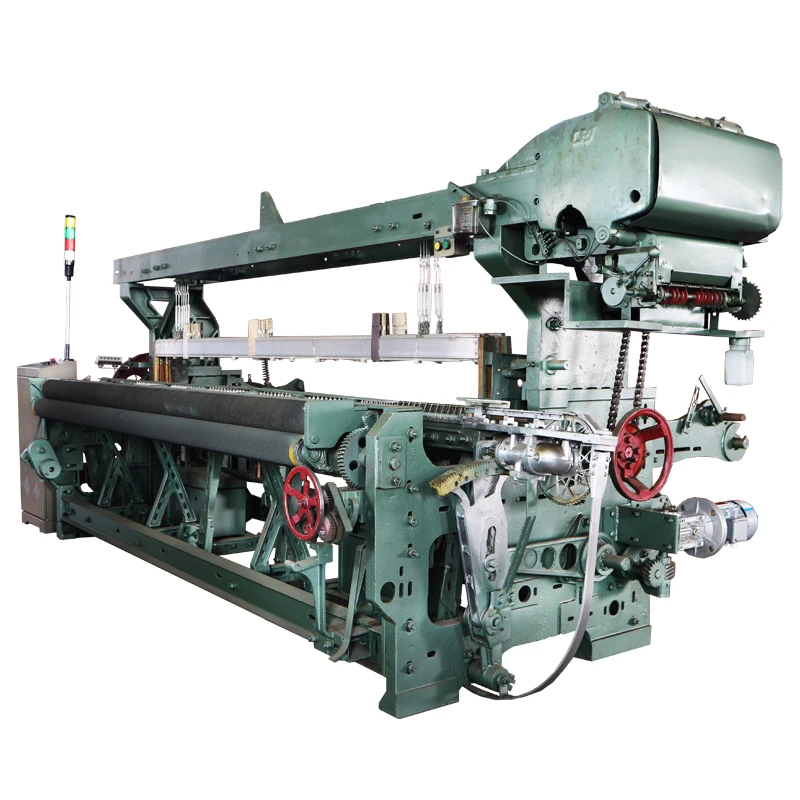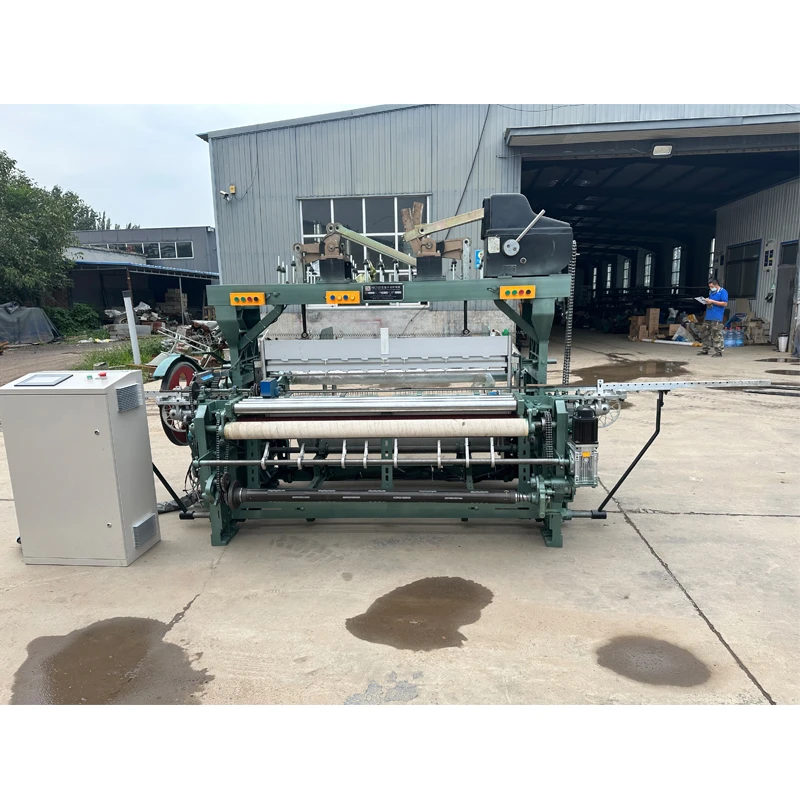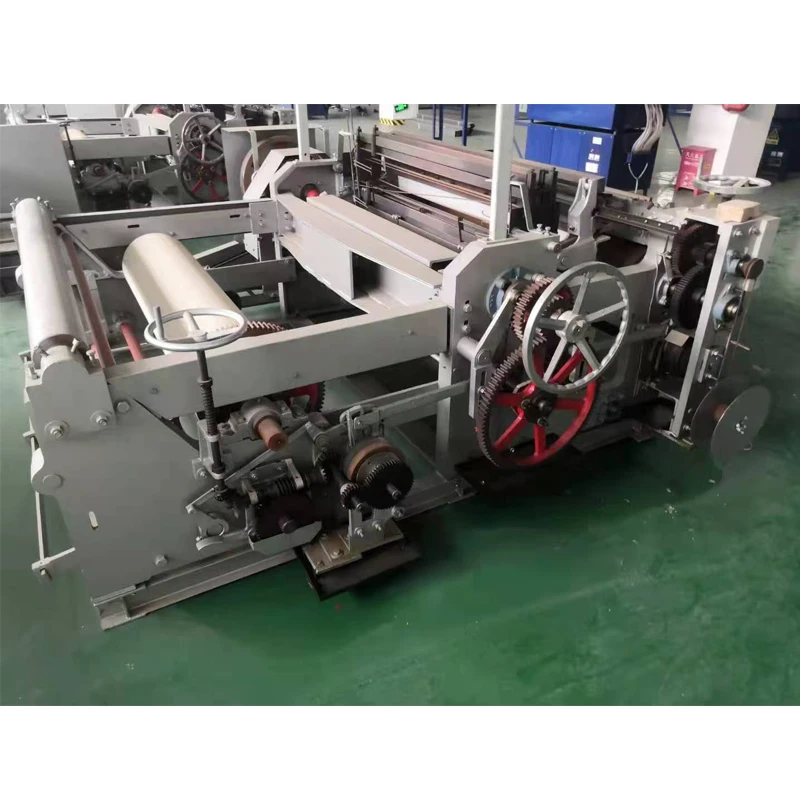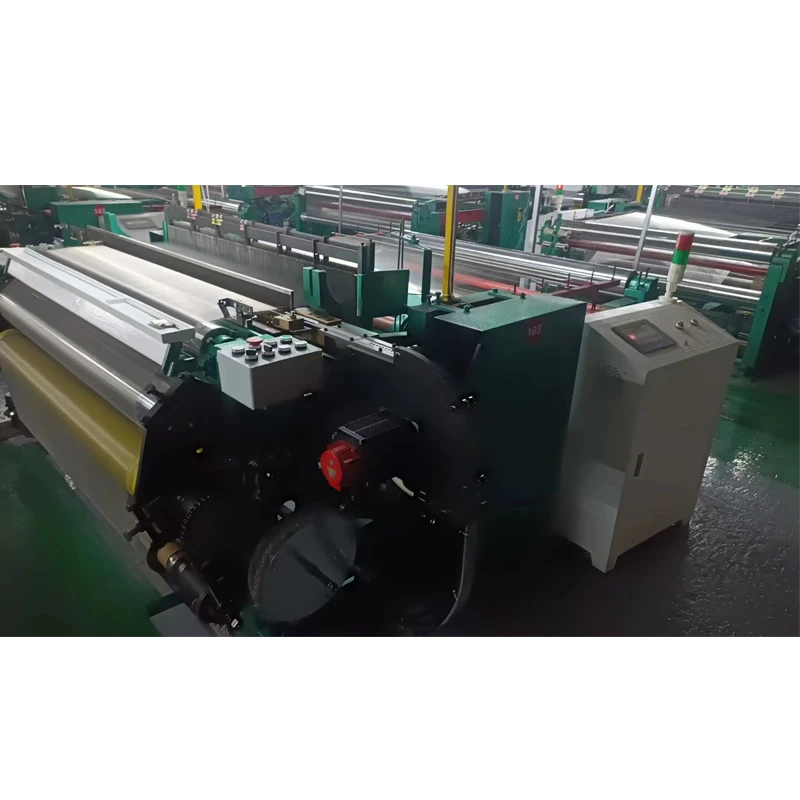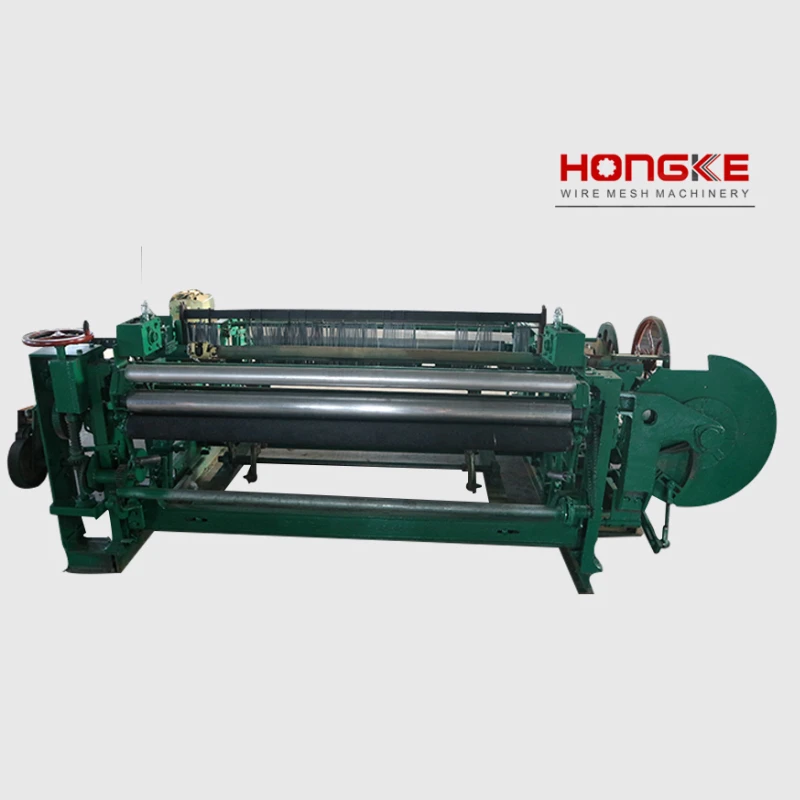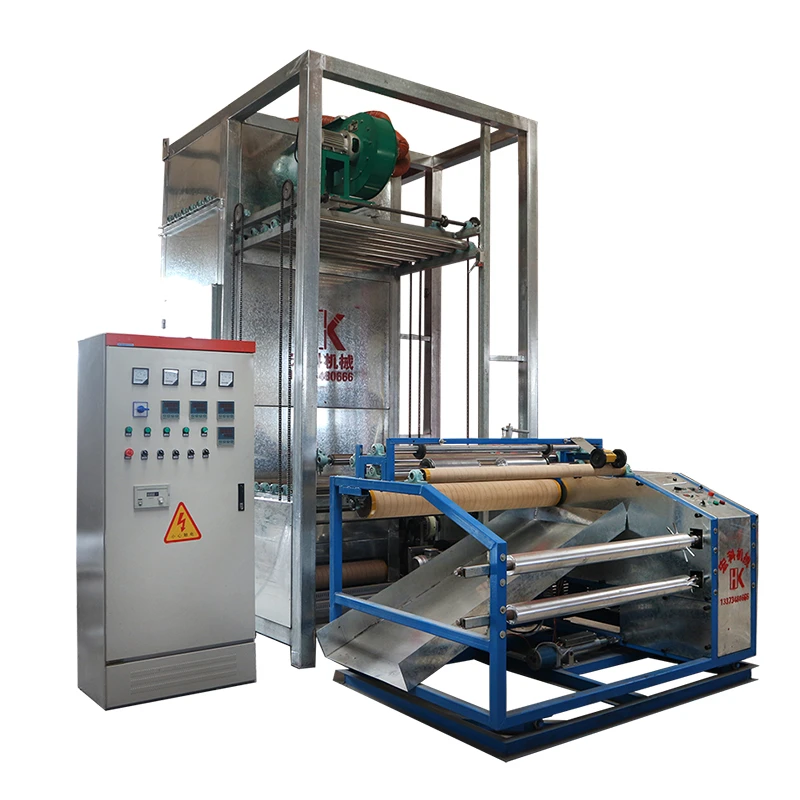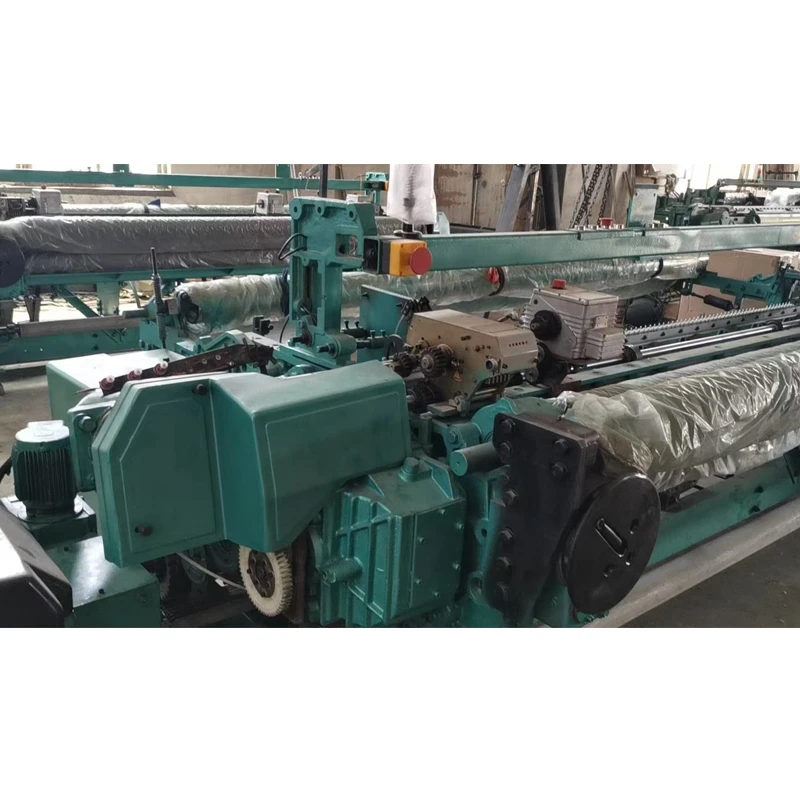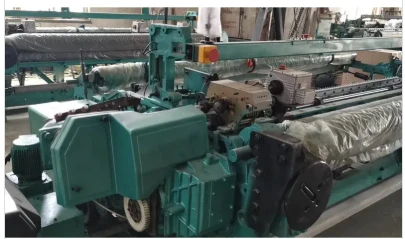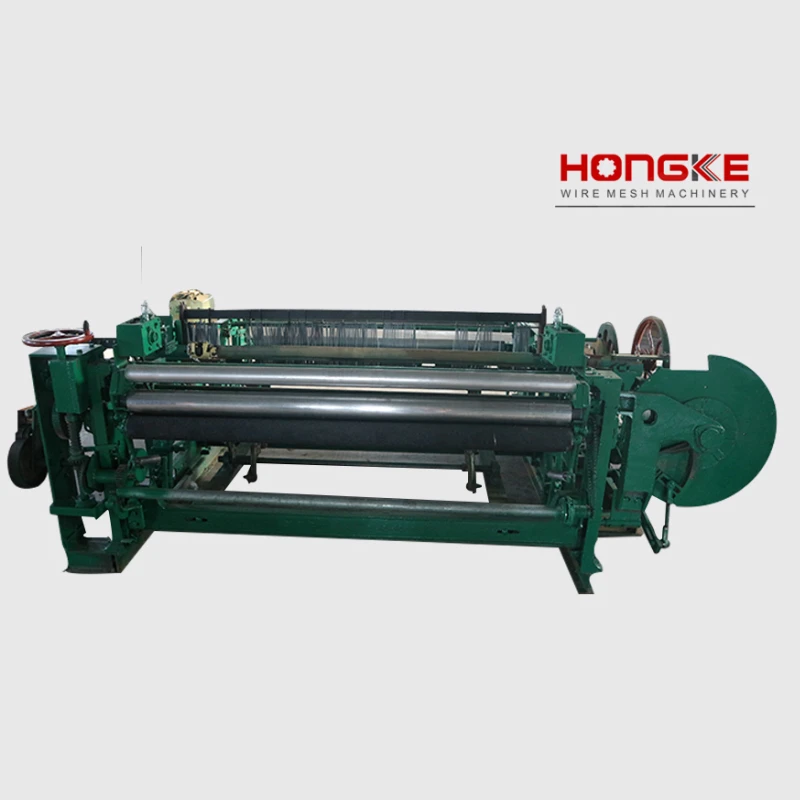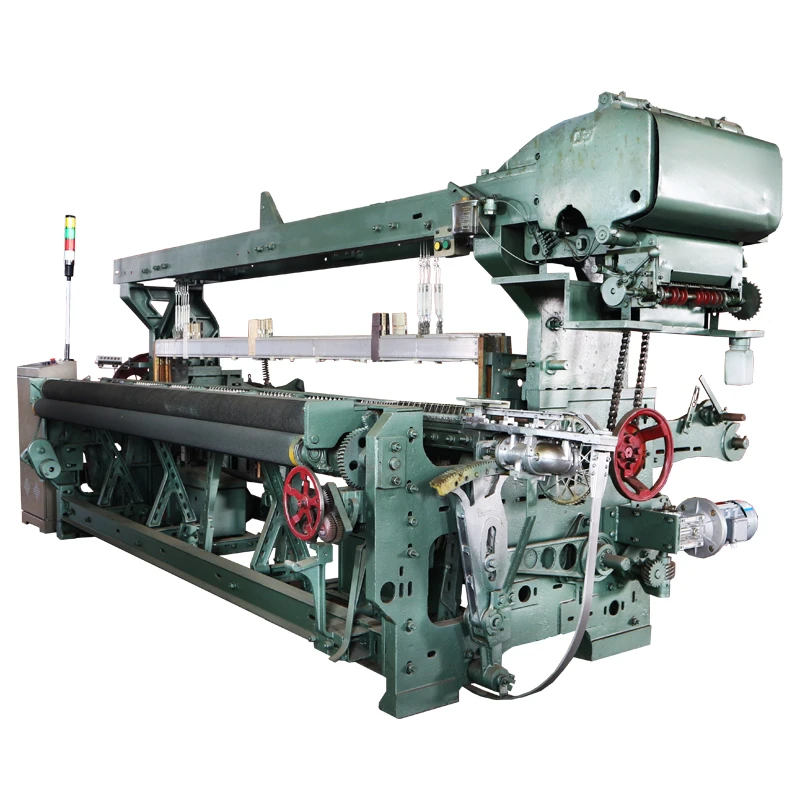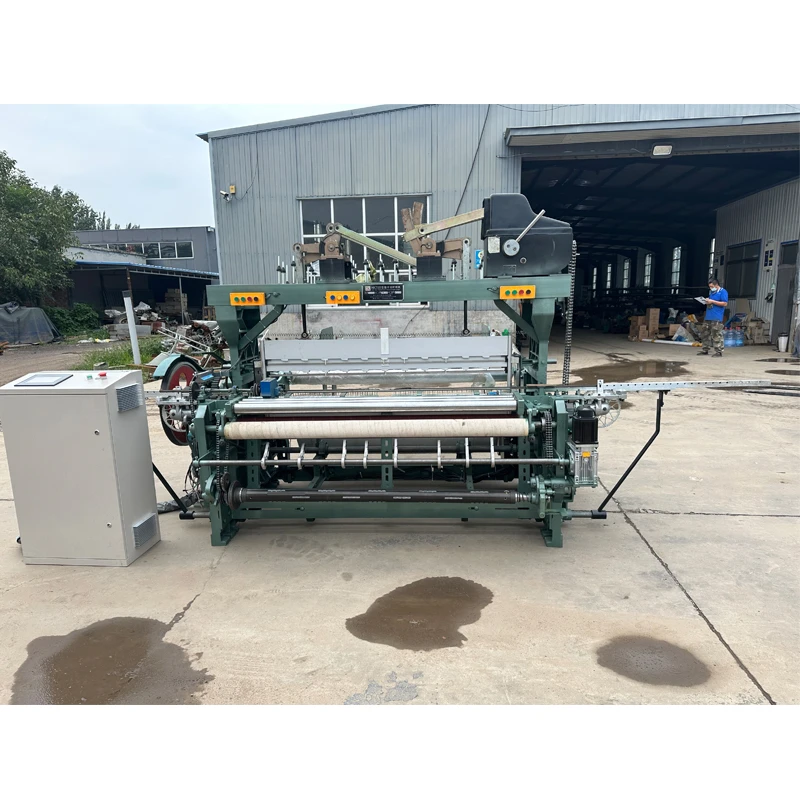
- Introduction to Rapier Weaving Technology
- Key Technical Advantages Breakdown
- Performance Metrics and Data Comparison
- Leading Manufacturers Analysis
- Customization Options for Specific Needs
- Real-World Application Case Studies
- Future Developments in Weaving Machinery

(rapier loom machine)
The Evolution of Rapier Loom Technology
Modern textile manufacturing has been revolutionized by rapier loom machine
s, which utilize flexible rods or tapes to carry the weft yarn across the warp shed. Unlike older shuttle looms, these systems enable significantly faster operation speeds – contemporary models achieve 450-750 picks per minute depending on fabric complexity. The versatility of this technology allows handling of diverse materials from delicate silks to heavy industrial canvases. Manufacturers benefit from approximately 23% higher production output compared to projectile systems, while maintaining consistent weave integrity throughout extended operation cycles.
Energy efficiency represents a critical advancement in current-generation rapier power loom machines. Intelligent motor systems reduce power consumption by 15-20% compared to previous models through regenerative braking technology that captures kinetic energy during deceleration phases. This sustainability feature directly lowers operational expenses while meeting increasingly stringent environmental regulations across global manufacturing regions.
Technical Advantages of Contemporary Models
Contemporary rapier weaving machines incorporate precision engineering solutions that enhance reliability and fabric quality:
Key innovations include:- Self-lubricating bearings extending service intervals to 3,500 operational hours
- Laser-guided weft insertion systems achieving ±0.3mm accuracy
- Modular rapier heads allowing tool-free changeovers in under 7 minutes
- Predictive maintenance sensors detecting 87% of potential failures before disruption
Electronic let-off and take-up mechanisms maintain uniform tension automatically, minimizing defects while enabling complex weave patterns previously unattainable. Advanced models feature real-time tension mapping with 200+ data points per meter, automatically adjusting parameters to prevent weaving imperfections even with irregular yarns.
Performance Metrics Comparison
| Model Feature | Standard Rapier Loom | High-Performance Power Loom | Jacquard Rapier System |
|---|---|---|---|
| Maximum Speed (ppm) | 520 | 720 | 480 |
| Weft Insertion Rate (m/min) | 1,200 | 1,650 | 950 |
| Energy Consumption (kWh/m) | 0.18 | 0.15 | 0.23 |
| Fabric Width Range (cm) | 150-340 | 190-420 | 210-380 |
| Changeover Time (min) | 25 | 18 | 38 |
Data represents median values from 2023 production models across leading manufacturers. High-performance power looms demonstrate 28% greater efficiency in dense fabric production versus standard models.
Manufacturer Capabilities Analysis
Prominent weaving machinery manufacturers offer distinct technological approaches:
Picanol leads in automation with their patented Sumo motor technology achieving 18% energy savings. Their rapier weaving machines feature onboard AI that reduces setup times by 45% through pattern recognition algorithms. Dornier systems excel in technical textiles, with reinforced rapier tapes capable of inserting heavyweight yarns at 1,300m/min. China Textile Machinery dominates the mid-range segment with 24-hour technical support coverage across 58 countries.Italian manufacturer Smit Textile specializes in luxury fabric production, offering rapier loom weaving machines with microprocessor-controlled dobby mechanisms that achieve 0.01mm precision in shed formation. Notably, 92% of their systems incorporate proprietary vibration-dampening technology that extends mechanical lifespan by approximately 17,000 operational hours.
Customization Solutions
Modern rapier power loom machines adapt to specialized production requirements through engineered modifications:
- Variable rapier head configurations accommodating yarn diameters from 0.02mm to 3.5mm
- Climate-controlled lubrication for extreme environment operation (-15°C to 55°C)
- Automated waste-reduction systems capturing 96% of trimming waste
For demanding applications like technical textiles, manufacturers provide reinforced drive trains capable of maintaining 18kN tension consistently. Jacquard rapier loom machine customization frequently includes advanced pattern programming interfaces with cloud connectivity, enabling remote pattern development and 240-stitch repeat capabilities without mechanical adjustments.
Industrial Application Case Studies
European upholstery manufacturer VanDeWiele deployed jacquard rapier loom machines to produce complex automotive interiors, resulting in 34% higher yield in premium fabric lines. Their integration of predictive maintenance sensors reduced unexpected downtime by 67% within the first production year. Meanwhile, Turkish terry cloth producer Noble Textiles converted 78 rapier power loom machines to solar-assisted drive systems, cutting grid energy dependence by 40% during daylight operations.
In India, Arvind Mills successfully implemented high-speed rapier technology for denim production, achieving a fabric output of 28 meters per hour per machine – a 22% increase over their previous generation equipment. The installed rapier weaving machines maintained consistent selvedge quality despite running at 650 picks per minute continuously during 18-hour production cycles.
The Future of Rapier Loom Machinery
Development roadmaps indicate several emerging innovations: Self-calibrating models using laser measurement systems will eliminate manual alignment by Q3 2024. Major manufacturers are testing hydrogen-compatible rapier power loom machines that promise carbon-neutral operation by 2026. Research indicates that graphene-coated rapier tapes could reduce friction losses by 27%, potentially increasing machine longevity beyond 250,000 operating hours.
The integration of quantum computing for real-time defect detection will transform rapier weaving machine operation by 2028. Current prototypes process fabric imagery at 120 frames per second with 0.002mm resolution, predicting imperfections 0.8 seconds before they manifest. As sustainability requirements escalate, next-generation rapier power loom machines are projected to reduce water consumption by 90% through advanced sizing application technology when weaving cotton and blended fabrics.
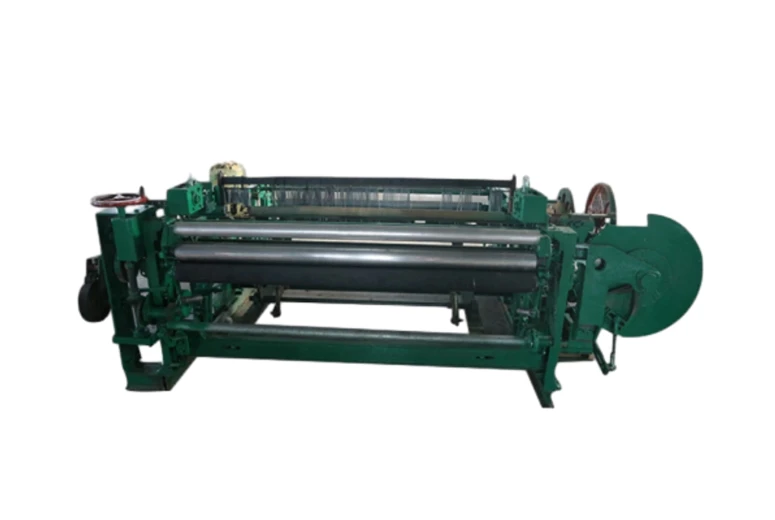
(rapier loom machine)
FAQS on rapier loom machine
Q: What is a rapier loom machine used for in textile manufacturing?
A: A rapier loom machine is designed for high-speed weaving of fabrics using a rigid or flexible rapier to transfer weft yarn. It ensures precise pattern alignment and handles a wide range of materials, making it ideal for complex textile production.
Q: How does a rapier power loom machine improve efficiency?
A: A rapier power loom machine automates weft insertion with electric or mechanical power, reducing manual labor and increasing output speed. Its consistent tension control minimizes yarn breakage, enhancing productivity in large-scale operations.
Q: What distinguishes a jacquard rapier loom machine from standard models?
A: A jacquard rapier loom machine integrates a jacquard mechanism to create intricate patterns and designs in fabrics. Unlike standard models, it allows individual warp thread control, enabling detailed motifs for upholstery or luxury textiles.
Q: What maintenance does a rapier loom weaving machine require?
A: Regular lubrication of rapier guides, inspection of sensors, and cleaning of yarn paths are essential. Scheduled calibration ensures consistent weft insertion and prevents mechanical wear, prolonging the machine's lifespan.
Q: Why choose a rapier loom over other weaving machines?
A: Rapier looms excel in versatility, handling diverse yarn types and widths with minimal waste. Their adaptability for both simple and jacquard patterns makes them preferable over projectile or air-jet looms for mid-to-high-end fabric production.









